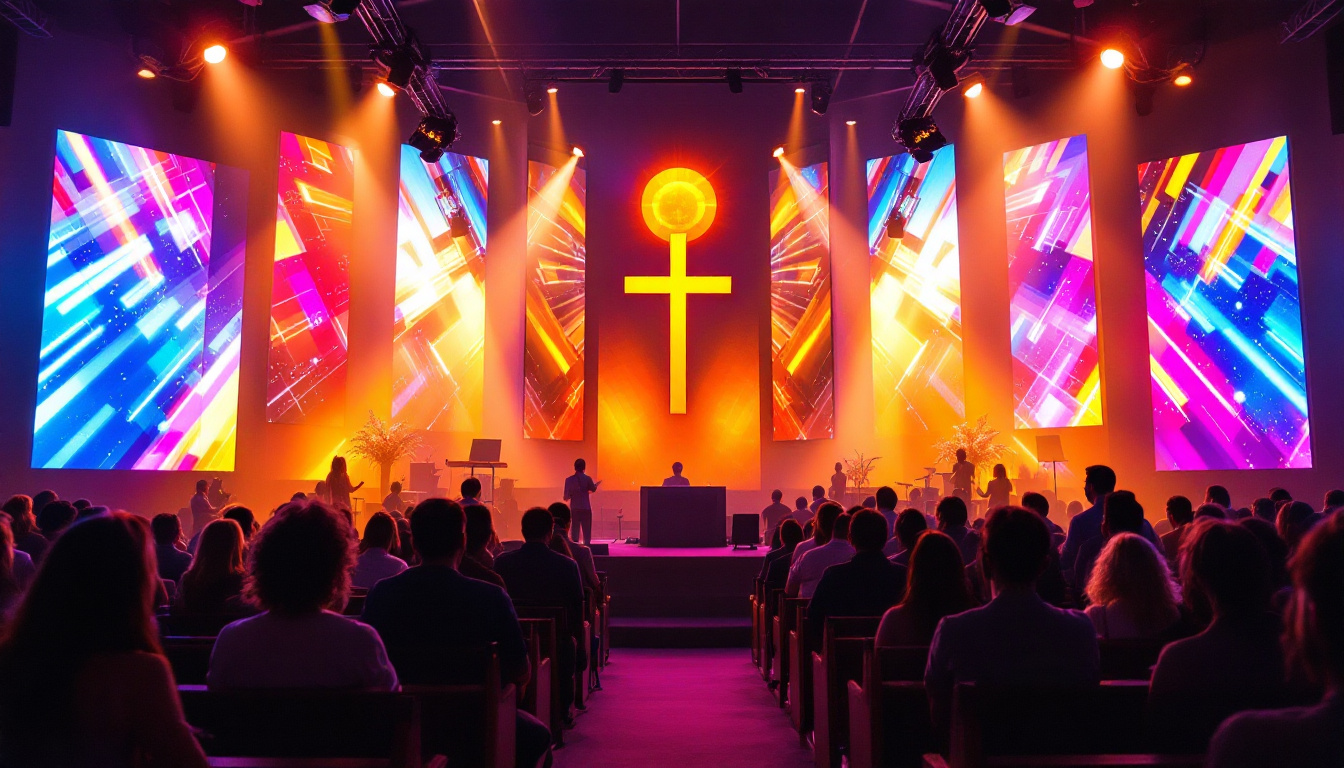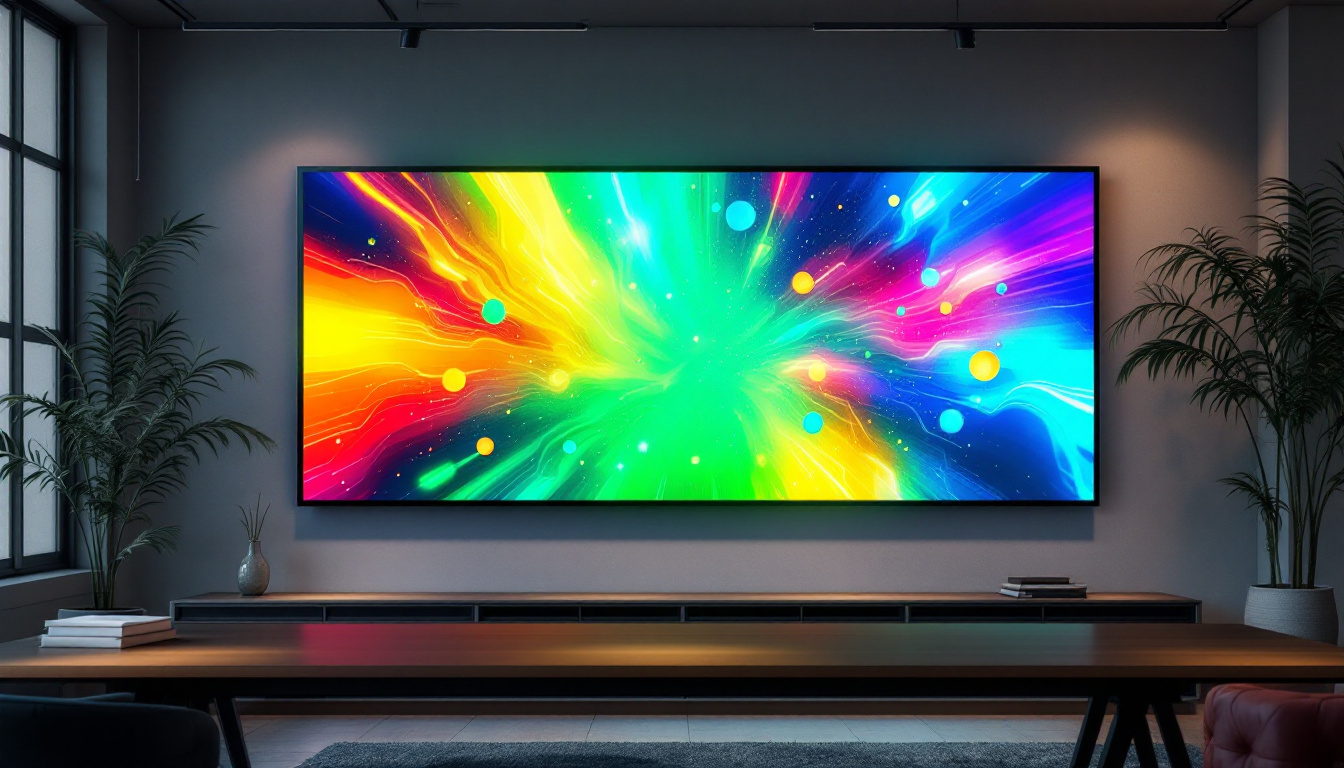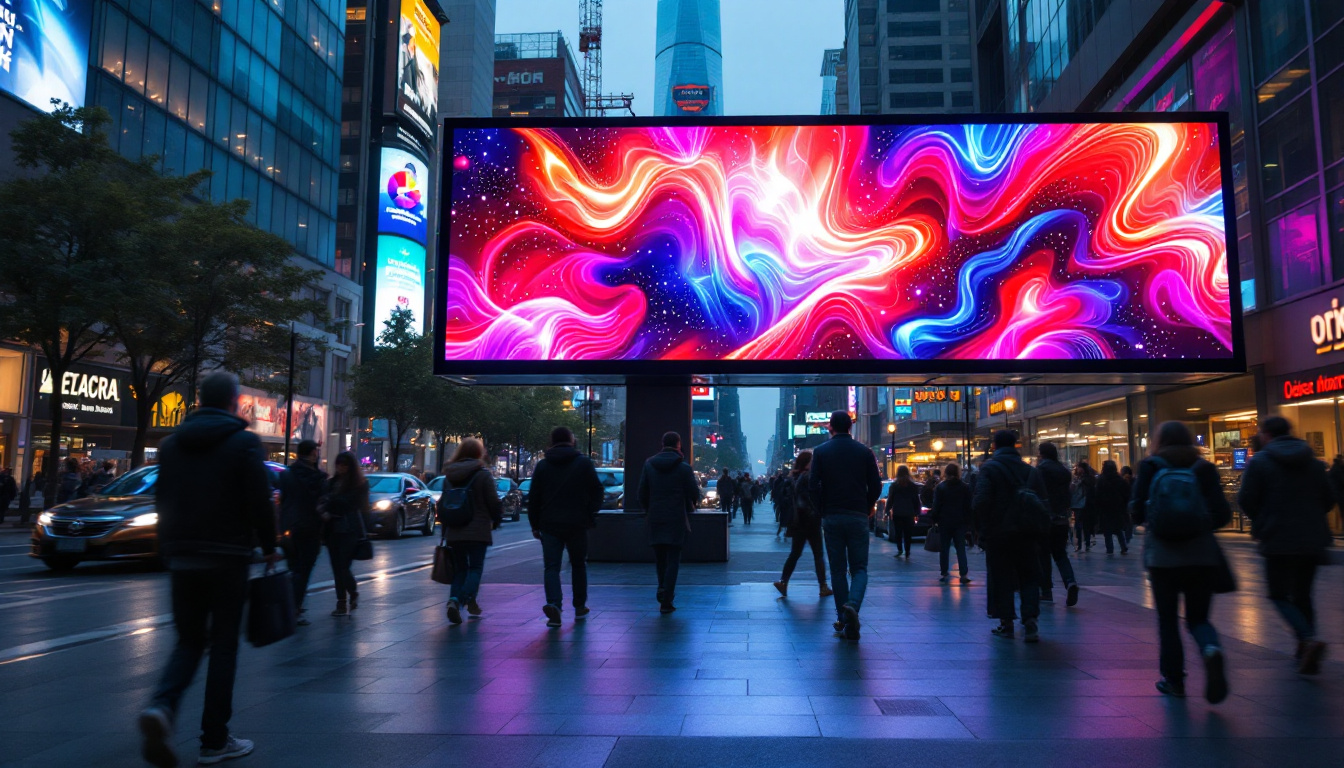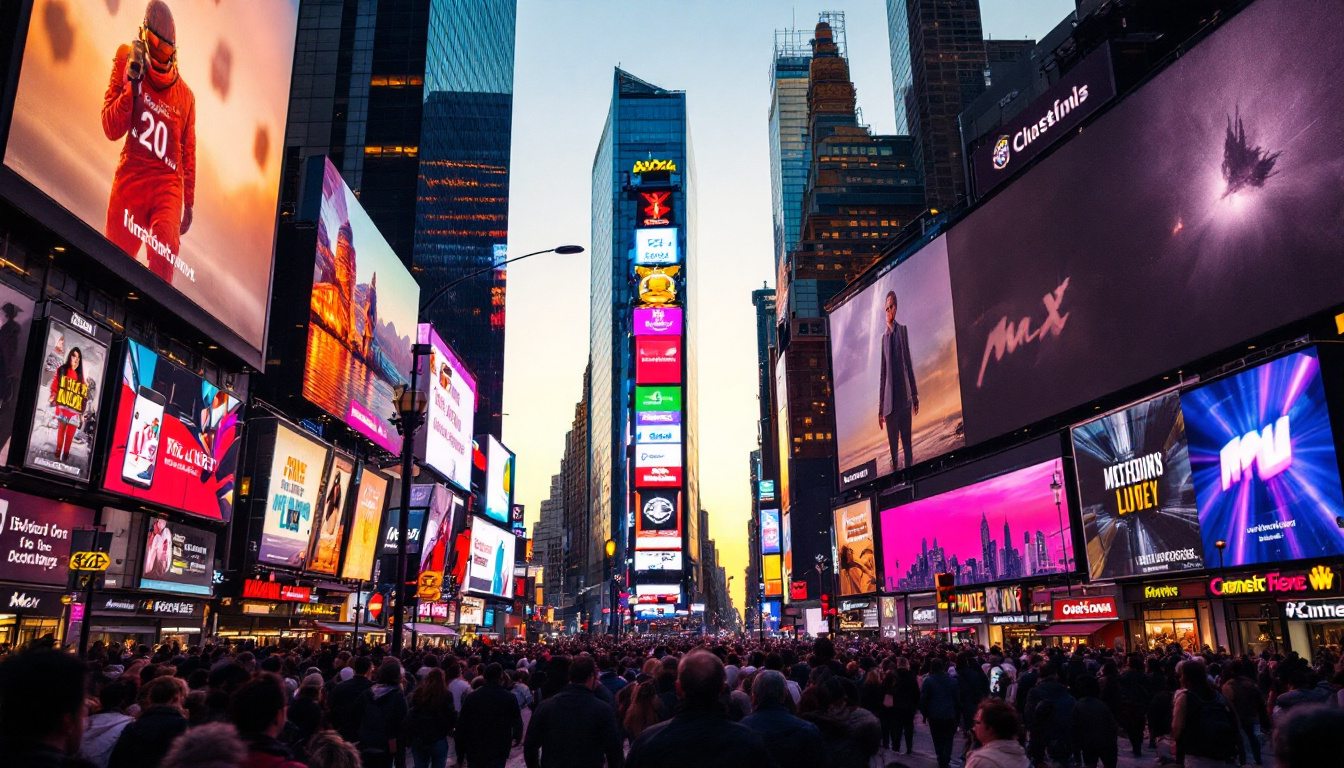In the modern age, technology plays an integral role in enhancing the worship experience. One of the most impactful innovations in this realm is the use of LED walls in churches. These vibrant displays not only capture attention but also convey messages, enhance worship, and create an immersive environment for congregants. This article delves into the various aspects of LED displays, exploring their benefits, types, installation considerations, and best practices for churches.
The Rise of LED Technology in Worship Spaces
LED technology has revolutionized the way churches communicate and engage with their congregations. With the ability to display high-quality images, videos, and text, LED walls have become a staple in many worship environments.
Enhancing Visual Communication
Visual communication is crucial in a church setting. LED walls can project lyrics, sermon notes, and multimedia presentations, making it easier for congregants to follow along. This enhances participation and ensures that everyone is on the same page, regardless of where they are seated.
Moreover, the clarity and brightness of LED displays allow for effective communication even in brightly lit environments. This is particularly beneficial during services held in large auditoriums or outdoor settings.
In addition to enhancing the worship experience, LED technology also provides churches with the flexibility to adapt their messaging quickly. For instance, during special events or announcements, churches can easily update visuals to reflect real-time information, such as service times or community events. This adaptability not only keeps the congregation informed but also fosters a sense of community engagement, as members can see their church actively participating in the life of the community.
Creating an Immersive Worship Experience
Beyond mere communication, LED walls can transform the atmosphere of a worship service. By displaying dynamic visuals that align with the theme of the service, churches can create an immersive experience that resonates with attendees. This can include everything from serene nature scenes during meditation to vibrant graphics during worship songs.
The use of LED displays can also enhance special events such as holiday services, baptisms, and community outreach programs. By tailoring visuals to the occasion, churches can foster a deeper emotional connection with their congregation.
Furthermore, the integration of LED technology allows for creative storytelling during sermons. Pastors can incorporate video clips, animations, or even live feeds to illustrate their messages more vividly. This multi-sensory approach not only captivates the audience but also aids in retention, as congregants are more likely to remember a sermon that is visually engaging. The synergy of sight and sound can lead to a more profound spiritual experience, encouraging attendees to reflect on their faith in new and meaningful ways.
Types of LED Displays for Churches
When considering LED walls, churches have several options to choose from. Each type of display serves different purposes and comes with its own set of advantages.
Indoor LED Walls
Indoor LED walls are designed for use within church buildings. These displays are typically lower in brightness compared to outdoor models, but they offer high resolution and excellent color accuracy. They are ideal for projecting detailed images and text during services.
Indoor LED walls can be mounted on walls or suspended from ceilings, allowing for flexibility in design and layout. Their versatility makes them suitable for various church sizes, from small chapels to large auditoriums. Additionally, many indoor LED walls come equipped with advanced features such as touch interactivity, enabling congregants to engage with the content being displayed. This can enhance the worship experience, allowing for interactive sermons or educational presentations that foster deeper connections among attendees.
Outdoor LED Walls
Outdoor LED walls are built to withstand the elements, featuring higher brightness levels to ensure visibility in sunlight. These displays are perfect for churches that host outdoor events or have large congregations that gather outside.
With weather-resistant casings and robust construction, outdoor LED walls can display vibrant content while remaining durable against rain, wind, and temperature fluctuations. They can be used for live streaming services, community events, and outreach programs. Furthermore, outdoor LED walls can serve as a beacon for the church, drawing in passersby with dynamic visuals and announcements about upcoming events. This visibility can significantly enhance community engagement and outreach efforts, making the church a more integral part of the local landscape.
Modular LED Screens
Modular LED screens consist of individual panels that can be configured in various sizes and shapes. This flexibility allows churches to create custom displays that fit their specific needs and space constraints.
These screens can be easily expanded or reconfigured as the church grows or as needs change. Modular LED screens are particularly advantageous for churches that may want to adapt their display for different events or services. For instance, during holiday seasons or special celebrations, churches can rearrange the panels to create larger, more impactful displays that reflect the spirit of the occasion. Moreover, modular screens can also be utilized for educational purposes, such as displaying information during Bible study sessions or workshops, making them a valuable asset for a wide range of church activities. This adaptability ensures that the investment in technology continues to meet the evolving needs of the congregation over time.
Installation Considerations
Installing an LED wall in a church involves careful planning and consideration. Several factors must be taken into account to ensure a successful installation that meets the needs of the congregation.
Space and Location
Before installation, it is essential to assess the available space and determine the optimal location for the LED wall. Factors such as sightlines, audience size, and existing architectural features should be considered. The goal is to ensure that the display is visible from all areas of the worship space.
Additionally, churches should consider the height and angle of the installation. Proper positioning will enhance visibility and ensure that the display is easily seen by all congregants. It’s also worth noting that the surrounding decor and lighting can impact the effectiveness of the LED wall. For instance, ambient light levels should be evaluated, as overly bright environments can wash out the colors on the screen, diminishing the overall impact of the visuals presented during services or events.
Technical Requirements
LED walls require specific technical setups, including power sources, data connections, and control systems. Churches should work with experienced technicians to ensure that all components are installed correctly and that the system is fully functional.
It is also important to consider the infrastructure of the building. Churches may need to upgrade electrical systems or network capabilities to support the new technology. Consulting with professionals can help identify any necessary upgrades before installation. Additionally, churches should think about the longevity of the installation. Selecting high-quality components and ensuring proper ventilation and cooling for the LED wall can prevent overheating and extend the lifespan of the technology, making it a more sustainable investment in the long run.
Budget and Financing
Investing in an LED wall can be a significant financial commitment. Churches should establish a budget that includes not only the cost of the display but also installation, maintenance, and potential upgrades. Exploring financing options, grants, or fundraising initiatives can help alleviate some of the financial burden.
It is essential to weigh the long-term benefits against the initial costs. An LED wall can enhance the worship experience and attract more attendees, ultimately contributing to the church’s growth and outreach efforts. Furthermore, churches might consider the potential for using the LED wall for community events, educational programs, and even live streaming services, which can further justify the investment. Engaging the congregation in discussions about the project can also foster a sense of ownership and encourage contributions, making the financial aspect more manageable and inclusive.
Best Practices for Using LED Walls in Worship
Once an LED wall is installed, churches should implement best practices to maximize its effectiveness. Proper usage can significantly enhance the worship experience and foster greater engagement among congregants.
Content Strategy
Developing a content strategy is crucial for utilizing an LED wall effectively. Churches should curate a mix of content that includes song lyrics, sermon points, images, and videos. This variety keeps the display fresh and engaging, preventing monotony during services.
Additionally, content should be aligned with the theme of the service. For example, during a sermon on gratitude, visuals that evoke feelings of thankfulness can enhance the message and create a more profound impact on the audience.
Training Staff and Volunteers
To ensure smooth operation, it is essential to train staff and volunteers on how to use the LED wall effectively. This includes understanding the control systems, troubleshooting common issues, and knowing how to upload and manage content.
Regular training sessions can help maintain a high level of proficiency among those responsible for operating the display. This preparation will ensure that the LED wall enhances rather than distracts from the worship experience.
Regular Maintenance and Upgrades
Like any technology, LED walls require regular maintenance to function optimally. Churches should establish a maintenance schedule that includes cleaning, software updates, and performance checks. This proactive approach can extend the lifespan of the display and prevent unexpected issues during services.
Additionally, as technology advances, churches should consider upgrading their LED walls periodically. Staying current with the latest advancements can enhance the visual experience and keep the congregation engaged.
Conclusion
LED walls have become a transformative tool for churches, enhancing communication, engagement, and the overall worship experience. By understanding the different types of LED displays, considering installation factors, and implementing best practices, churches can effectively integrate this technology into their worship spaces.
As congregations continue to seek innovative ways to connect and grow, LED walls offer a powerful solution that can elevate the worship experience and foster a deeper sense of community. Embracing this technology not only meets the needs of today’s congregants but also prepares churches for a bright and engaging future.
Illuminate Your Worship Space with LumenMatrix
As you seek to enhance the worship experience and foster a deeper community connection, consider the innovative LED display solutions from LumenMatrix. With a commitment to revolutionizing visual communication, LumenMatrix offers an array of options including Indoor and Outdoor LED Wall Displays, Custom LED Displays, and more, tailored to meet the unique needs of your church. Elevate your services and engage your congregation like never before. Check out LumenMatrix LED Display Solutions today and take the first step towards a brighter, more captivating worship environment.































